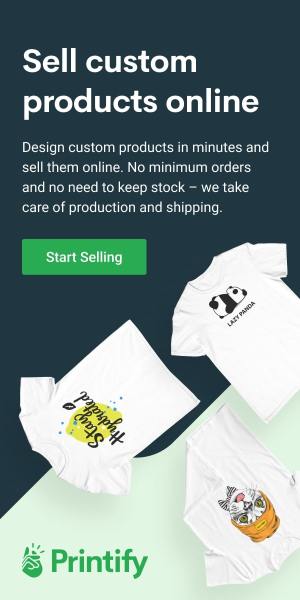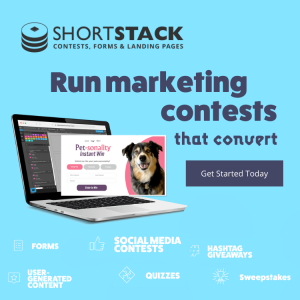What do you know about social media advertising? Which of the available social media platforms can help your business to quickly reach its marketing goals?
The undeniable fact is that social media platforms were traditionally meant for networking and meeting people. No one could have ever thought that social media would become an avenue for business marketing.
But nowadays, social media has been transformed into a powerful business marketing platform. It has the capability to enable businesses to reach millions of potential customers within a short period of time.
No wonder why global social ad spending doubled from $16 billion in 2014 to $31 billion in 2016, according to Hootsuite.
Why social media advertising?
When we talk about online advertising or marketing, display ads and paid search ads will always have their place. However, social media advertising has also come to play a powerful role in this digital marketing era.
Social media advertising helps businesses find new potential clients by using users’ own shared information to identify interests. Rather than reactively targeting users who search a certain term – as in paid search ads, social media advertising proactively targets relevant users before they even begin their search.
Social networking sites offer good options for advertisers because of the advanced targeting options, reliable conversion tracking, and prevalence on mobile devices.
Social media advertising platforms
Top brands understand the power of social media. They all know it’s more than just a platform to connect with families and make new friends. In fact, social media has already had game-changing effects on online advertising.

So, which of the social media advertising platforms is good for your business? Can you too leverage social media for your business marketing? Below are the top 7 social media advertising platforms your business should be using right now and why.
#1]. Facebook advertising

The amazing journey of Facebook as a social networking site began in 2004. Facebook has one of the more complex social media advertising platforms, with a whole array of targeting options.
The platform allows advertisers to target users based on past purchases and demographics, even outside of Facebook. The popularity of Facebook hasn’t reached its peak yet. This is why Facebook will continue to dominate social eCommerce.
- Monthly active users: 1.393bn
- Average cost of advertising — cost per impression (CPM)*: $1.54
- Percentage of users who log in daily: 70%
- Percentage of platform users who are millennials: 75.6% (18-34-year-olds)
- Pros of Facebook advertising: Largest social network and the one with the most options for targeting.
- Cons of Facebook advertising: Advertising is becoming more expensive.
- Ads options: Facebook offers two options for ads – as a sponsored post in Facebook’s news stream, or on the right-hand column.
#2]. Twitter advertising

Twitter advertising can be targeted based on what users search for and what they reveal in their profiles. It is arguably one of the best social media advertising platforms to generate leads at one-third the cost of other marketing channels. Also, it has an 8 to 24 times higher click-through rate than Facebook ads.
The social media platform also allows targeting according to what users have done online, outside of Twitter. We earlier posted an infographic on Twitter as a marketing tool. It highlights how your business can easily gain from using Twitter. Check it out!
- Monthly active users: 288m
- Average cost of advertising — cost per impression (CPM)*: $12.16
- Percentage of users who log in daily: 36%
- Percentage of platform users who are millennials: 23.8% (18-34-year-olds)
- Pros of Twitter advertising: People like to tweet while watching TV so advertisers are able to create “two-screen” campaigns combining TV and Twitter.
- Cons of Twitter advertising: Because users do not need to use real names or reveal much about themselves, does not allow as much targeting as Facebook.
- Twitter advertising options: Twitter marketing offers three options for advertising: promoted tweets, promoted accounts, and promoted trends.
#3]. Instagram advertising
 No doubt about it, Instagram offers better results when it comes to brand marketing and users engagement. Instagram users engagement is second to none for businesses looking to improve their brand visibility on the platform.
No doubt about it, Instagram offers better results when it comes to brand marketing and users engagement. Instagram users engagement is second to none for businesses looking to improve their brand visibility on the platform.
Instagram is becoming a valuable marketing platform and this is why businesses should take advantage of Instagram marketing now that it’s getting bigger even than Twitter. Recently started to allow advertisers to include links to their own products and websites from posts.
- Monthly active users: 300m
- Average cost of advertising — cost per impression (CPM)*: ?
- Percentage of users who log in daily: 49%
- Percentage of platform users who are millennials: 43.1 (18-34-year-olds)
- Pros of Instagram advertising: Appeals to a younger generation who view Facebook as their parents’ social network. It works well for brands that have strong visuals.
- Cons of Instagram advertising: Only a limited number of brands are allowed to advertise at the moment. The lack of links on the site makes it hard to direct customers to products.
- Instagram advertising options: Launched advertising a year ago with selected partners.
#4]. LinkedIn advertising
 Each of the LinkedIn advertising options offers you the flexibility and affordability to reach your target audience, whether you are generating leads, growing your network, recruiting new employees, or growing your company page membership.
Each of the LinkedIn advertising options offers you the flexibility and affordability to reach your target audience, whether you are generating leads, growing your network, recruiting new employees, or growing your company page membership.
LinkedIn recently launched a tool similar to Facebook’s Atlas, which allows advertisers to target LinkedIn users outside the platform. So what can your business gain from LinkedIn?
- Monthly active users: 187m
- Average cost of advertising — cost per impression (CPM)*: $27.90
- Percentage of users who log in daily: 13%
- Percentage of platform users who are millennials: 13% (15-34-year-olds)
- Pros of LinkedIn advertising: Access to a professional audience with accurate information about people’s professional lives: people can be targeted by job title, employer, industry, and even skills. LinkedIn members have twice the buying power of the average web audience, according to Comscore.
- Cons LinkedIn advertising: Users do not log on to LinkedIn as often as other networks.
- LinkedIn advertising options: LinkedIn offers two options: ads that appear in the sidebar or sponsored updates that appear in the news feed.
#5]. Pinterest advertising

Pinterest is one of the world’s most popular social bookmarking websites. It’s capable of driving web traffic to a business website on a regular basis. This is why Pinterest advertising is becoming a necessity, especially for top brands.
There are quite some interesting Pinterest stats for marketers that show how effective it could be especially for e-commerce marketing. Pinterest offers advertisers access to the ‘Pinstitute’, a programme that teaches users how to create successful ‘Pins’.
- Monthly active users: 70m (of which 20m-30m are estimated to be active)
- Average cost of advertising — cost per impression (CPM)*: Unknown yet (?)
- Percentage of users who log in daily: 17%
- Percentage of platform users who are millennials: 17.9% (18-34-year-olds)
- Pros of Pinterest advertising: Users visit Pinterest in a mood receptive to shopping. Many are creating boards around life events such as weddings and redecorating, which advertisers are keen to tap into.
- Cons of Pinterest advertising: Just one advertising format: Promoted Pins.
- Pinterest advertising options: Just introduced a ‘buy’ button that makes it easier for users to make purchases directly from the platform.
#6]. Snapchat advertising

Snapchat’s Discover paved the way for exciting new developments in social and mobile advertising. Discovery is a unique media distribution platform where publishers such as the Daily Mail, Vice, Yahoo, CNN, and ESPN display stories.
Companies can buy ad space around this content. Adweek reported that advertising on a ‘my story’ could cost brands $750,000 a day. This is unconfirmed by Snapchat.
- – Monthly active users: 100m (could be close to 200m now but this is unconfirmed)
- – Average cost of advertising — cost per impression (CPM)*: Unconfirmed
- – Percentage of users who log in daily: Unconfirmed
- – Percentage of platform users who are millennials: 32.9% (18-34-year-olds)
- – Pros of Snapchat advertising: Users are highly engaged, and need to actively press a button to view a story, so advertisers can be sure attention is not wavering.
- – Cons of Snapchat advertising: Stories and associated ads disappear after hours. Ads are not shareable and there are no outbound links.
- – Snapchat advertising options: Advertisers sponsor ‘stories’, or collections of many people’s pictures, often around specific events.
#7]. YouTube advertising
 Video marketing is becoming one of the most effective means of business marketing in today’s digital marketing era. However, no platform can do the job better than YouTube advertising.
Video marketing is becoming one of the most effective means of business marketing in today’s digital marketing era. However, no platform can do the job better than YouTube advertising.
When it comes to viral video content marketing, YouTube helps you deliver your message to the right people at the right time with video ads. This platform is especially good for eCommerce businesses as virtually almost everyone that has a smartphone also has access to YouTube. This is where product videos are sampled before people do their shopping.
- Monthly active users: 1bn
- Average cost of advertising — cost per impression (CPM)*: Unconfirmed
- Percentage of users who log in daily: Unconfirmed
- Percentage of platform users who are millennials: 82% (18-29-year-olds)
- Pros of YouTube advertising: Holds users’ attention for a long time: they can spend hours watching videos. A familiar advertising medium, very similar to creating material for TV.
- Cons of YouTube advertising: Viewers do not like pre-roll adverts and often skip them. Brands cannot request a specific slot, so there is a risk the ad will be playing just before something unpleasant.
- YouTube advertising options: YouTube advertising offers four options: Display ads next to or below the YouTube player; semi-transparent overlay ads that appear over the bottom 20 percent of a video; skippable video ads that can be inserted before, in the middle or after a video and non-skippable ads that must be viewed before the video is shown.
So which one of these platforms do you think is the best and why? Please let us know in the comment below!
. . . . . . . .
* CPM can vary greatly according to different campaigns. Figures should be considered indicative only. Sources: eMarketer; InSites Consulting; Pew Research Centre; Maija Palmer; FT research.
PLEASE SHARE ON PINTEREST










































Thanks for this great article Adeyemi. For a social media marketer, this is like Christmas. I really love a good article written on social media. Very well written!
I think social media is arguably the best thing ever to happen to online marketing. Thanks for reading and the comment. Hopefully, I will see you more around here. Remain blessed!
One of our visitors just lately recommended the following website